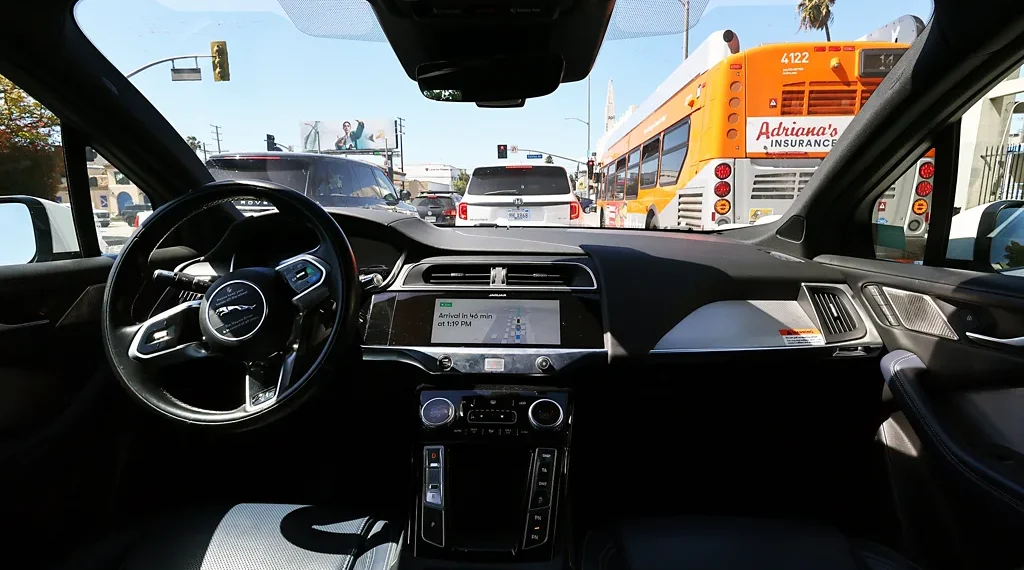How Robotaxis Are Trying to Win Passengers’ Trust
Autonomous vehicles are already driving millions of miles on public roads, but they still face a tough challenge: convincing people to trust and ride in them.
During a recent tour of San Francisco in one of Waymo’s self-driving cars, I observed something striking: people are becoming increasingly comfortable with the sight of driverless vehicles. It wasn’t just that these vehicles were present on the streets, but that tourists no longer stared in surprise as they passed by. The technology had become a familiar sight.
Inside the car, Waymo is making efforts to instill confidence in passengers. As passengers enter the all-electric vehicle, they’re greeted by name, and music plays to create a welcoming atmosphere. A screen displays a map of the route, while another offers a view of the vehicle’s surroundings, showing pedestrians, cyclists, and obstacles ahead. Waymo aims to let passengers see what the car can see to build trust in its driving abilities.
This effort is part of a wider trend in the autonomous ride-hailing industry. As self-driving cars navigate busy urban streets in select cities, companies like Waymo are focused on making passengers feel at ease. But research shows that people in the US and UK remain hesitant to ride in these vehicles, with safety concerns being a major barrier. Unlike conventional cars, people have higher expectations when it comes to the safety of autonomous vehicles.
Building Trust Through Familiarity
Megan Neese, Waymo’s head of product and customer research, explains that trust is built when passengers know where the car is going and that it “sees” what they see. That’s why Waymo’s next generation of cars will keep the traditional front-facing seats and steering wheel—familiar features that help reassure passengers.
Waymo, owned by Google’s parent company Alphabet, began offering driverless rides in 2020. Today, it offers around 150,000 paid rides weekly in cities like San Francisco, Los Angeles, and Phoenix. While still small-scale compared to services like Uber, Waymo is a leader in the autonomous taxi industry.
A Different Approach: Zoox
Meanwhile, Amazon-backed Zoox is preparing to launch its own robotaxi service in 2025. However, Zoox is taking a different approach to passenger comfort. In its test vehicle, there’s no steering wheel, no forward-facing windows, and no displays showing the surroundings. Instead, passengers sit in a bay-style seating arrangement facing each other, with controls for temperature and music available on small screens. Zoox wants to allow passengers to “lose themselves” in the ride, removing the need to see what’s happening outside the car.
Zoox has also taken steps to assure the public of the vehicle’s safety, revealing its Fusion Center, where human operators can remotely intervene in tricky situations. The company claims its vehicles were remotely assisted for only 1% of their driving time during testing.
Challenges and Competition
Waymo isn’t the only player in the robotaxi market. General Motors’ Cruise, which operates in California, faced a setback in October 2023 after one of its vehicles dragged a pedestrian 20 feet. Since then, Cruise has worked to highlight its safety measures, including a team of fleet monitors and remote assistance.
Although self-driving taxis are most advanced in the US and China, their deployment is still in its early stages. Waymo has the largest fleet in the US, with over 700 cars on the road, but China is testing even more autonomous vehicles, with around 16,000 self-driving cars and buses across dozens of cities. Baidu’s Apollo Go is one of China’s leading robotaxi services, operating fully driverless rides in cities like Beijing and Wuhan.
Global Expansion and Public Perception
As autonomous vehicle trials expand globally, countries like Japan, Singapore, South Korea, and the UK are preparing for their own robotaxi services. In Japan, for instance, May Mobility has launched trials in Nagoya, aiming to cater to an aging population that may benefit from autonomous transport.
Despite the growing number of trials, passenger adoption remains low. While some are quick to embrace self-driving taxis, many still harbor doubts about their safety. With regulatory challenges and competition on the rise, companies in this space must work hard to build passenger trust to make robotaxis a common sight on roads worldwide.
This article was rewritten by JournosNews.com based on verified reporting from trusted sources. The content has been independently reviewed, fact-checked, and edited for accuracy, neutrality, tone, and global readability in accordance with Google News and AdSense standards.
All opinions, quotes, or statements from contributors, experts, or sourced organizations do not necessarily reflect the views of JournosNews.com. JournosNews.com maintains full editorial independence from any external funders, sponsors, or organizations.
Stay informed with JournosNews.com — your trusted source for verified global reporting and in-depth analysis. Follow us on Google News, BlueSky, and X for real-time updates.














